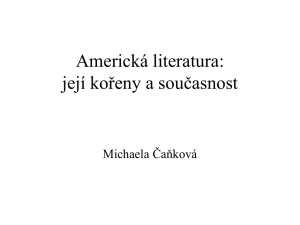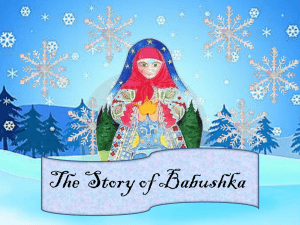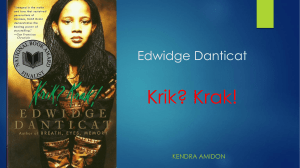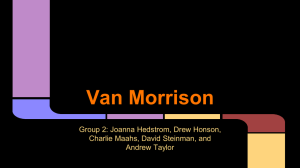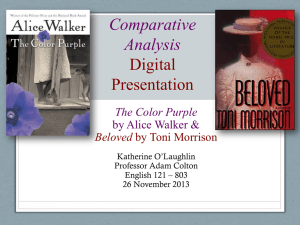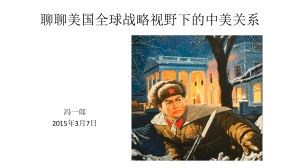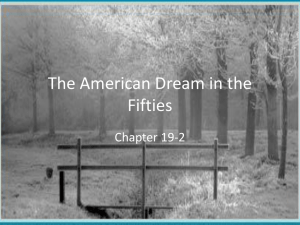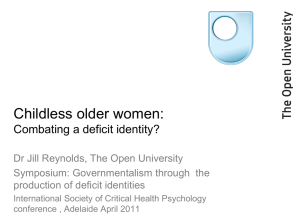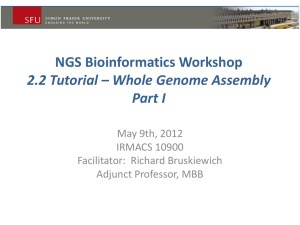ACL 1001: Reading Contemporary Fiction
advertisement
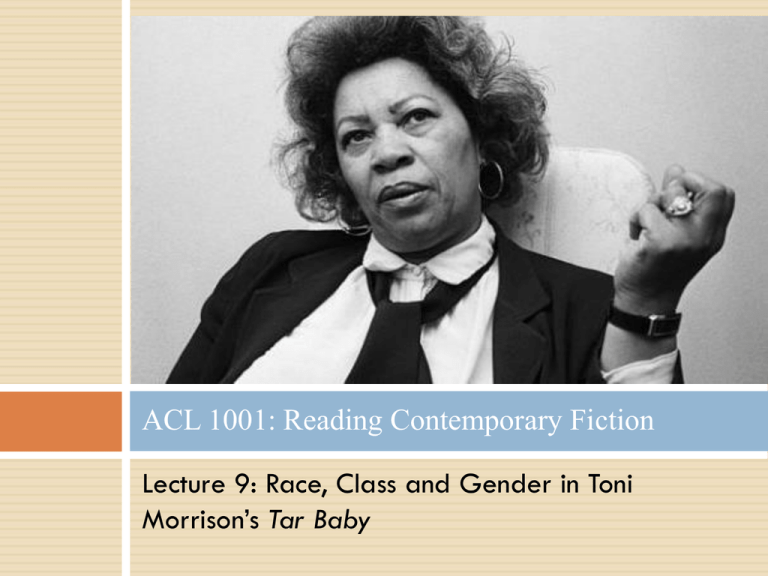
ACL 1001: Reading Contemporary Fiction Lecture 9: Race, Class and Gender in Toni Morrison’s Tar Baby THE IMPORTANCE OF BLACK WRITING WRITING AS A BLACK WOMAN TAR BABY CHARACTERS IN TAR BABY (JADINE, SON AND GENDER) Structure of the Lecture Tar Baby Organised around the figure of the Tar Baby in the American Fable http://americanfolklore.net/folklore/2010/07/brer_rabbit_mee ts_a_tar_baby.html Who or what is the tar baby? Who is Brer Fox, Brer Rabbit? “It was the image of the tar, however artfully shaped, black, disturbing, threatening yet inviting, that led me to African masks . . . All of the characters (in Tar Baby ) are masks. And like African masks, the novel merged the primal and the contemporary, lore and reality” (Foreword, 1981, pxiii) W.E.B DuBois, “Double Consciousness” The Souls of Black Folks (1903) W.E.B DuBois (1868-1963): “the problem of the Twentieth Century is the problem of the color-line” ‘After the Egyptian and Indian, the Greek and Roman, the Teuton and Mongolian, the Negro is a sort of seventh son, born with a veil, and gifted with second sight in this American world, - a world which yields him no true selfconsciousness, but only lets him see himself through the revelation of the other world. It is a peculiar sensation, this double consciousness, this sense of always looking at one’s self through the eyes of others, of measuring one’s soul by the tape of the world that looks on in amused contempt and pity’ (p. 2). Carole Boyce Davies, Black Women, Writing and Identity: Migrations of the Subject ‘But what of Black femaleness or Black womanness? For it is the additional identity of femaleness which interferes with seamless Black identity and is therefore either ignored, erased or “spoken for”. One still finds some women trying to say that they want to speak only as an African or as a “Black”, and not as a woman, as if it were possible to divest oneself of one’s gender and stand as neutered within the context of palpable and visible historical, gendered, and racialized identities’ (p. 8). ‘Otherness’/Alterity What these writers are alluding to is an ideology that determines how people within a culture perceive the world around them. Recall the black and white binary we looked at it in the last lecture, and how loaded those terms were. What we’re talking about is an ideological structure which perceives certain people in our culture as ‘the other’. For example, women, people of colour, our indigenous population, people of faiths different to Christianity, homosexuals are all seen as ‘other’ in our culture, and in many senses this otherness /alterity permeates these individuals’ sense of self. Writing as a Black Woman "I really think the range of emotions and perceptions I have had access to as a black person and a female person are greater than those of people who are neither ... My world did not shrink because I was a black female writer. It just got bigger." Toni Morrison Writing as a Black Woman “I look very hard for black fiction because I want to participate in developing a canon of black work. We've had the first rush of black entertainment, where blacks were writing for whites, and whites were encouraging this kind of self-flagellation. Now we can get down to the craft of writing, where black people are talking to black people.” Toni Morrison Writing as a Black Woman Lister writes that : “For Morrison, the function of the novel is not to instruct the reader through the elaboration of formulaic, end-determined narratives, but to illuminate and engage with social and cultural conflicts and do justice to their complexities” (2009, p.13). Morrison not only challenges the content and perspective of Anglo-centric texts, but she also challenges their structure and language. Writing as a Black Woman Jago Morrison adds: “What (Toni Morrison’s) work does represent, though, is an attempt to go beyond the limits of conventional, empirical historical scholarship, to a broader imaginative reclamation of African American-ness” (2003, p.115). “One of the most interesting and paradoxical qualities of Toni Morrison’s writing is the way in which, through a well-established written medium, it attempts to illustrate the complexity and extent of African American oral culture” (2003, p.121) Writing as a Black Woman Jago Morrison also argues: “Working both within and against established traditions of scholarship, it is sound, rhythm and above all, language that, for her, serve as the archive of the African American” (2003, p.124). In Morrison’s work we see the a heightened use of metaphor, repetition, poetic imagery and a lyricism which challenges the Anglo-centric structure of the novel and of narration. She asks us to think about the way we read, and also calls into question the limitations of the realist novel. That Interview In the 1990s Jana Wendt interviewed her on the ABC. She asked one of the most stupid questions ever asked on Australian television. Interview with Jana Wendt - 1998 Wendt: You have in your writing certainly marginalized whites. Why are they of no particular interest to you? Morrison: I was interested in another kind of literature that was not just confrontational, black versus white. I was really interested in black readership. That Interview Wendt: You don’t think you will ever change and write books that incorporate white lives into them substantially? Morrison: I have done. Wendt: Substantially? Morrison: You can’t understand how powerfully racist that question is, can you? Because you would never ask a white author, ‘When are you going to write about black people?’ Tar Baby As we’ve discussed, the novel is based on Brer-Rabbit and the Tar Baby – trickster folktale. The term ‘tar-baby’ has two main meanings: A sticky situation, which is difficult to remove oneself from; gets worse the more entangled one gets A racist term used to describe African-American people (Coates, 2006) Toni Morrison, Tar Baby First published in 1981 Set on a fictional Caribbean island and in the United States (New York and Eloe, Florida). L’arbe de la Croix is written as a paradise, an Eden. ‘In Tar Baby, I wanted to be in a place where the characters had no access to any of the escape routes that people have in a large city... I wanted the characters all in a pressure cooker, and that had to be outside of the United States’ (Morrison, 1983, p. 417) Tar Baby: Themes Race, class and gender relations between characters living with and/or working for Valerian Street, a wealthy white American patriarch Vision – recurring motif throughout the novel: blindness, multiple perspectives, art, representation, photography, facade, masks Excess, Consumption, Decadence, Binary Oppositions: black/white; urban/rural; past/future; rich/poor Aesthetic Opposition: African vs European Art Setting in Tar Baby Middle Passage: many Africans jumped ship rather than face their future as slaves on the US or the Caribbean plantations Caribbean: colonised by the French, English, Spanish, Danish, Dutch, Portuguese New World economies: built on slave labour which was used to cultivate crops, such as sugar, cotton, coffee Wealthy British and Americans made their fortunes from the cultivation of commodity crops e.g. Valerian Street’s candy business Characters in Tar Baby Sydney and Ondine Childs – ‘Kingfish and Beulah’, ‘Machete-hair and Bow-tie’, Uncle Tom and Mammy Jadine Childs – ‘the copper Venus’; Jade Valerian and Margaret Street – the Candy King and the ‘Principal Beauty of Maine’ Michael Street – absent yet present; Socialist Son – ‘dreadlock haired man’; ‘rapist’ Gideon, Alma Estee and Therese – ‘Yardman and the Marys’ Gender Jadine: light-skinned; Western ideals of beauty; fashion model; tough; financially independent; antithetical to Son’s ideas of Black womanhood; ‘the night women’ Son: ‘rapist’; sexual prowess; physically powerful; violent; remorseful; Margaret: ‘eye-candy’, challenges notions of good mothering; ‘trophy’ wife Valerian: patriarch, benevolent, distant, powerful, “good father” Ondine: mother-figure, ‘Mammy’, represents an image of Black womanhood that Jadine does not wish to emulate. Sydney, regardless of being friendly with Valerian is still his employee – while Sydney might not see this, Son does. Jadine and Son Jadine and Son want to rescue each other from the oppositional worlds they both inhabit, from each other’s world view For Son: ‘these include the narrative of the peasant who rescues the princess from imprisonment; the narrative of the culturally conscious/literate who rescues the culturally unconscious/alienated, the narrative of the supposedly mature elder who rescues the child/Childs, and the narrative of the formerly enslaved African who returns to rescue another enslaved relative or friend via the Underground Railroad’ (Ryan, p. 603) Jadine and Son For Jadine: ‘On Jadine’s part, the narrative patterns include the sophisticate who rescues/ uplifts the “noble” savage from his primitivism, the representative of the “talented tenth” who rescues one of the designated untalented nine-tenths/folk from educational, cultural and sociopolitical stagnation, and the supposedly mature woman who rescues the son/Son’ (Ryan, p. 603) ‘One had a past, the other a future and each one bore the culture to save the race in his hands. Mama-spoiled black man, will you mature with me? Culture-bearing black woman, whose culture are you bearing?’ (Morrison, Tar Baby, p. 272) Jadine and Son ‘Jadine and Son had no problems as far as men and women are concerned. They knew exactly what to do. But they had a problem about what work to do, when and where to do it, and where to live. Those things hinged on what they felt about who they were, and what their responsibilities were in being black. The question for each was whether he or she was really a member of the tribe. It was not because he was a man and she was a woman that conflict arose between them’ (Morrison, 1981, p. 422). Judylyn Ryan, Modern Fiction Studies, 1993 ‘Toni Morrison’s fiction displays an extensive concern with the erasure of African cultural consciousness and cultural history, and the persisting cultural illness which this erasure precipitates’ (Ryan, 1993, p. 598) Toni Morrison, ‘I think that the conflict of gender is a cultural illness’ (qtd by Ryan, 1993 p. 598) Judylyn Ryan, Modern Fiction Studies, 1993 Racial stereotyping is used to ‘revision stereotypes’ (Moffit 2004, p. 12) ‘Morrison constructs blackness not as a form of judgment or standards but as a history, a rhetoric, an ethics, a way of seeing and knowing the world, and as an aesthetic that encompasses all of these things’ (Krumholz 2008, p. 265). John Duvall, Contemporary Literature, 1997 ‘What Son wants to do to the fashion model Jadine is what Valerian already has done to Margaret, the former Maine beauty queen--namely, construct a female subjectivity that effaces itself the better to serve male identity. If Valerian has made Jadine a tar baby in one sense (a black woman more cathected to white culture than black), Son surely wishes to make her a tar baby in another (a nurturing black mama who will never ask to share a male authority or autonomy)’ (p. 328) Letitia L. Moffit, ‘Finding the Door’, Critique, 2004 ‘Morrison has deliberately created Son as an apparent moral yardstick for all of the other characters, and although we may initially believe we are supposed to side with him, in fact, I believe she has crafted her own tarbaby-like “trap”. The trap is in judging the characters in terms of overly simplistic, quickly formed definitions based on their apparent roles – a trap into which the characters themselves initially fall, given their limited visions, but that readers may avoid, given that from our vantage point we are able to see multiple visions’ (p. 14). Conclusion ‘Tar is the sticky stuff of ideology, the culturally constructed meanings internalized in language and our unconscious minds, and it is the potential transformation through knowledge and selfknowledge that enables and requires us to see (in and through) blackness. In Tar Baby, Morrison uses tar to free the language from its signifying chains, to play in and with the dark’ (Krumholz 2008, p. 272) Yinka Shonibare, Nigerian Artist, Victoria and Albert Museum, 2007
